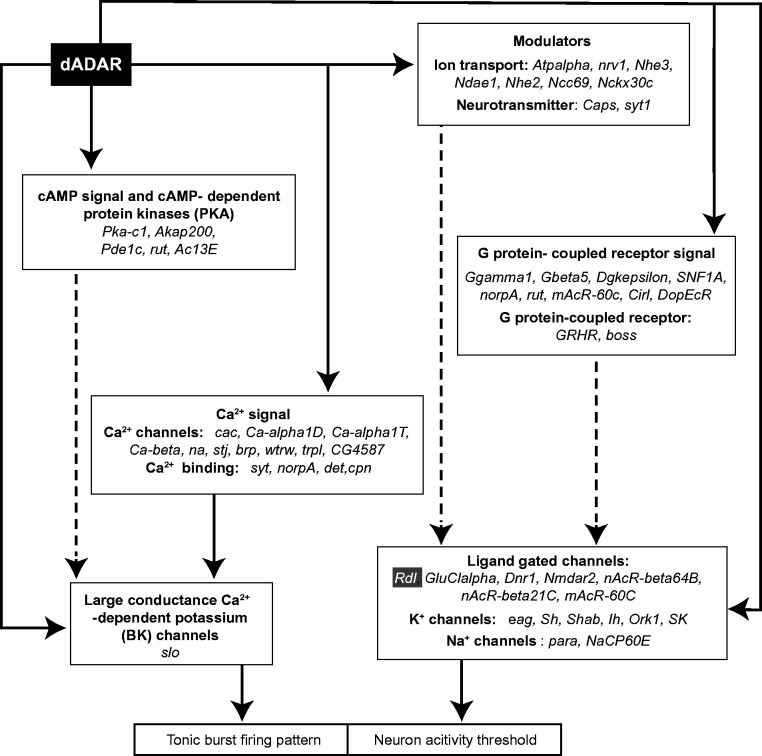Figure 6.
Drosophila CNS edited transcripts encode a range of proteins likely to underlie aberrant neuronal excitability in Adar-overexpressing or Adar null mutants. Solid lines indicate direct control and dashed lines show indirect effects. Each box represents a category of edited transcripts encoding proteins that either directly or indirectly influences neuronal excitability by effects on the action potential firing threshold or tonic or burst firing pattern control. Transcripts edited by dADAR encode ligand-gated channels, potassium channels and sodium channels that set the neuronal activity threshold. Rdl, encoding a GABA-gated GABAA receptor subunit, is highlighted in the box at the right lower corner. Various transcripts encoding modulators, including ion transporters, neurotransmitters and G-protein coupled signalling proteins are also edited by dADAR. Functional changes in these proteins will also indirectly modulate the ion channels that determine the neuronal activity threshold. dADAR is also expected to modulate the neuron firing pattern. An edited slo transcript that encodes the Calcium-dependent large potassium (BK) channel is known to directly regulate the tonic or burst firing pattern of the neuron. Ca2+ directly regulates BK channel activity; therefore, all genes listed in the ‘Ca2+ signal’ box both influence BK channel activity and express transcripts edited by dADAR. In addition, some edited transcripts encode cAMP signalling and PKA family proteins that may indirectly control BK channel activities.

